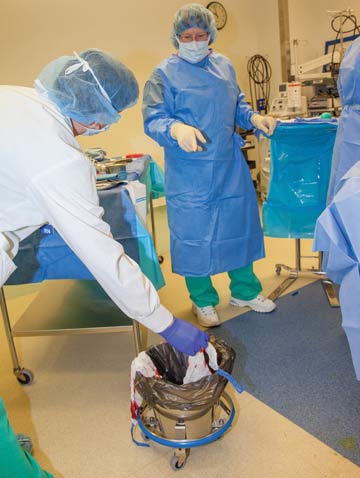Retained surgical items are considered "never events" because they're never supposed to occur — and yet they still happen all too often. "They remain the sentinel event most frequently reported to The Joint Commission, and the most commonly retained item is a sponge," says Victoria M. Steelman, PhD, RN, CNOR, FAORN, FAAN, a patient safety expert and an associate professor emeritus at the University of Iowa College of Nursing in Iowa City. Often, sponges are left behind despite the manual count being correct. That's why there's such a compelling case for safety-focused surgical facilities to enhance their manual counting process with tracking and identification systems. "Retained surgical items are a major patient safety issue, and cost-effective technology is available to prevent them from happening," says Dr. Steelman.
There are two main types of platforms:
- Barcode scanning. This accounting system supplements your facility's manual counting process. You scan individual surgical sponges into the system at the beginning of the procedure and scan them out once they've been removed from the patient. It's an effective and automated way to make sure each one is accounted for before the case ends. "When you scan items in and out, the system prints out reports," says Robert M. Cima, MD, a colon and rectal surgeon and a professor of surgery at Mayo Clinic in Rochester, Minn. "You can compare the reports to make sure every sponge that's scanned in is also scanned out."
- Radio frequency identification (RFID). These systems help prevent retained items by alerting providers to the exact location of missing sponges. RFID chips embedded with individual sponges are detected when staff pass the system's wand in close proximity. Staff can also use the wand to double-check that all sponges have been accounted for, even when manual counts are believed to be correct. On top of improving patient safety, this system can also save the surgical team time. "If the count is incorrect and no sponge is identified in the patient, the wand can be used to locate the missing sponge elsewhere in the room, such as in a linen hamper or trash can," says Dr. Steelman.
.svg?sfvrsn=be606e78_3)

.svg?sfvrsn=56b2f850_5)